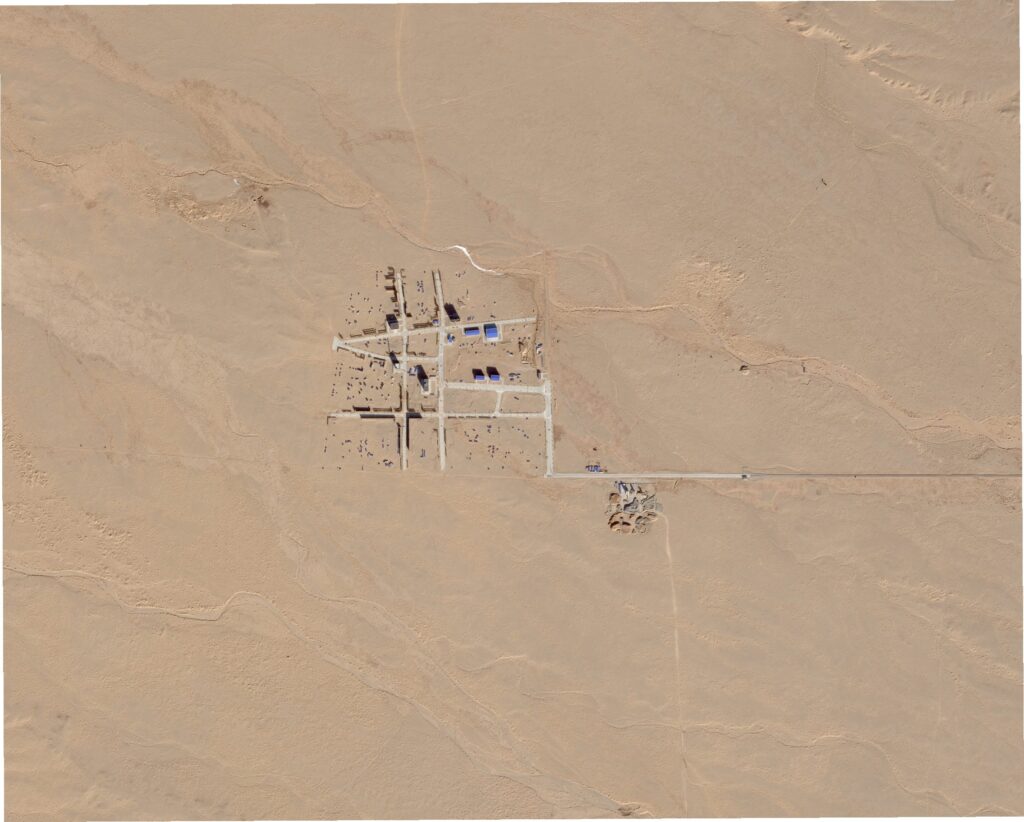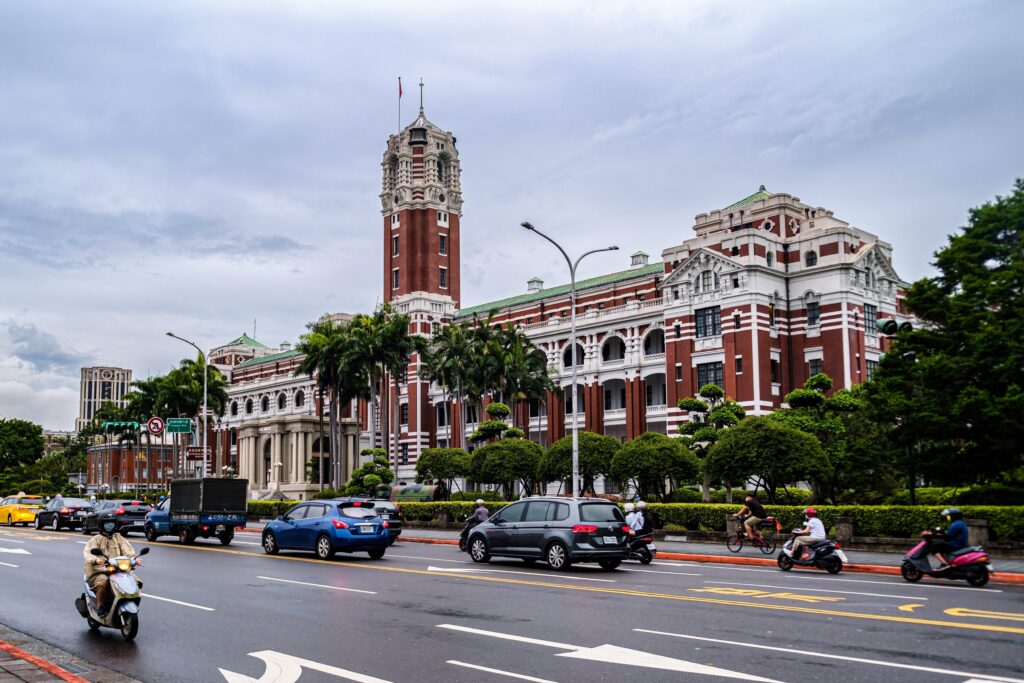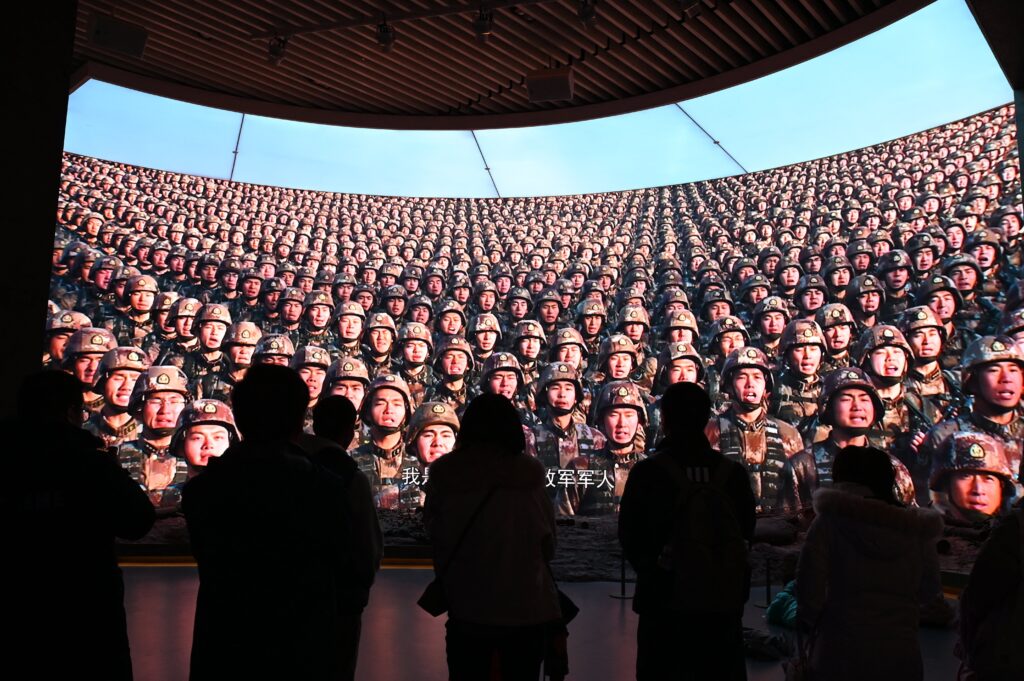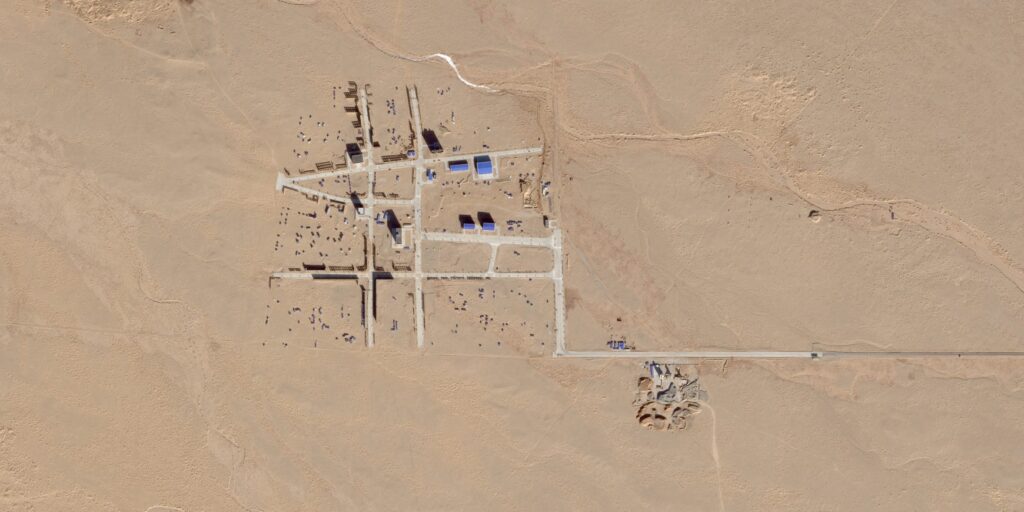- Satellite images show China's mock-up of Taiwan's presidential office at a desert training site.
- It is not the first time China has built such mock ups, which indicate a readiness to use force.
- China has also built mock ups of US warships in the desert for apparent target practice.
Out in the desert at a military training site, China has built a mock-up of a key area of Taiwan's capital city where the presidential office and other government buildings are located, satellite images show.
The mock-up, like others before it, seems to indicate China's intentions and focus, though its use is uncertain.
China often engages in aggressive and coercive behavior that alarms its neighbors, is pursuing a significant military build-up and modernization effort, and has never renounced the use of force as an option for achieving unification with Taiwan.
Images of the mock target, located in the desert in the Alxa League area of northern China's Inner Mongolia, began circulating on social media earlier this week. Taiwanese defense analyst Joseph Wen posted the satellite image, as well as a map comparison of the real area in Taipei, on Monday.
Wen noted that while China had previously created a replica of Taiwan's president's office building at another area, specifically Zhurihe, this mock up covered much of the office's surrounding area and was located at what appeared to be an aerial bombing and gunnery training range.
When compared to an actual map of the area, the mock-up looks relatively realistic, with the roads and the presidential office's surroundings closely resembling the real place in Taiwan's capital city, Taipei.
Satellite images provided by Planet Labs to Business Insider show the site, which is still there, has been there since at least December 2022.

It is unclear though when exactly the mock-up was built, but it's not the first.
Making Taiwan's presidential office and US warships in the desert
Back in 2014 and 2015, satellite images showed the other mock-up of Taiwan's presidential office at Zhurihe, also in Inner Mongolia, and a video broadcast by CCTV in July 2015 captured Chinese troops practicing an assault on the fake building, The Diplomat reported at the time.
The office mock-up was a convincing replica. Imagery from China-based web portals showed troops entering the building conducting some sort of raid.

When asked by reporters on Wednesday about the images of the Bo'ai Special Zone mock-up that surfaced this week, Defense Minister Chiu Kuo-cheng said that any country could imitate another's facilities and area, adding that Taiwan's military could also conduct military exercises in simulated locations.
Indeed, this kind of training isn't necessarily unusual, but it nonetheless signals intent.
China has also been documented building mock-ups of US aircraft carriers and other warships at training sites, likely to test and improve its missiles.
Experts have long warned about the increasing stockpiles and capabilities of its Rocket Force and what role those assets would play should the the US and China go to war, be it over Taiwan or for some other reason.
Fresh worries about a Chinese invasion of Taiwan
The images of the mock-up at Alxa League have surfaced at a time of renewed concern about possible Chinese aggression against Taiwan.
Amid China's assertiveness at sea and in the air, demonstrated by unpredictable military drills, fiery run-ins with Philippine boats, and close calls with US aircraft, there continues to be concern about a potential invasion of Taiwan.
Just last week, US Navy Adm. John Aquilino, the commander of US Indo-Pacific Command, told the US Armed Services House Committee that China was building its military up at a scale not seen since World War II and was on track to be ready to invade Taiwan by 2027.

China often employs economic, diplomatic, and militarily aggressive and coercive tactics toward Taiwan, such as pressuring countries that interact with the island or routinely flying fighters and bombers around it, forcing a response.
In response to Taiwan's election earlier this year, China has turned up the pressure, and ongoing military drills in Taiwan have prompted warnings from China.
Taiwan elected a new president, the Democratic Progressive Party's Lai Ching-te, the current Vice President, in January. It's a historic win for the DPP, which has now been in power for three consecutive terms. It was also China's worst case scenario.
The DPP has navigated a tricky situation since gaining power in 2016, trying to preserve status quo with Beijing while maintaining Taiwan's autonomy. Though China is generally opposed to the elections, Beijing would have preferred the Kuomintang's Hou You-ih, who is not pro-Beijing but has an outlook on relations with China that is softer than DPP's.
